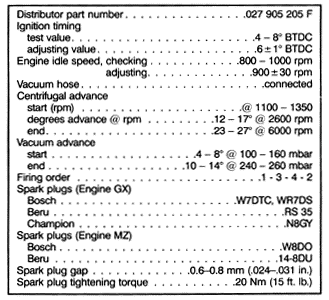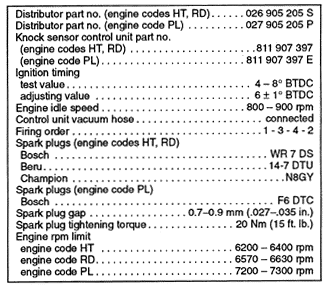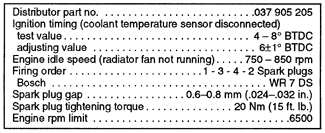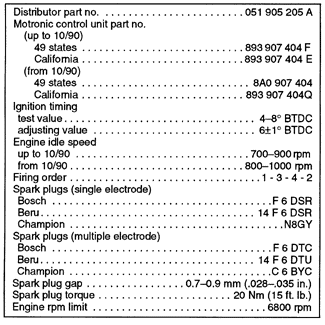4. Transistorized Coil Ignition (TCI-h) SystemThe TCI-h system has four major components: the distributor with Hall sender, the ignition control unit or power stage, the coil, and the spark plugs. The TCI-h system with knock control used on engines with CIS-E fuel injection also includes the knock sensor and knock sensor control unit. With the Digifant II and CIS-E Motronic engine management systems, the Digifant and Motronic control units control the knock sensor. This section covers checking and adjusting the ignition timing, checking the basic TCI-h system's mechanical and vacuum timing advance functions, and troubleshooting the knock sensor system. Testing of the basic ignition system electronics, including the Hall sender and the ignition control unit or power stage, is covered in 3.4 Testing Hall Sender and Ignition Control Unit, 3.5 Testing Hall Sender and Coil Power Stage (CIS-E Motronic only), or 3.6 Testing Hall Sender and Coil Power Stage (Digifant I only). The components of the basic TCI-h ignition system are illustrated in Fig. 4-1. Ignition timing is mechanically adjusted to compensate for changes in engine speed and load. The centrifugal advance system of spring-loaded rotating weights advances ignition timing as engine rpm increases. The vacuum advance mechanism adjusts ignition timing to adapt to changes in engine load.
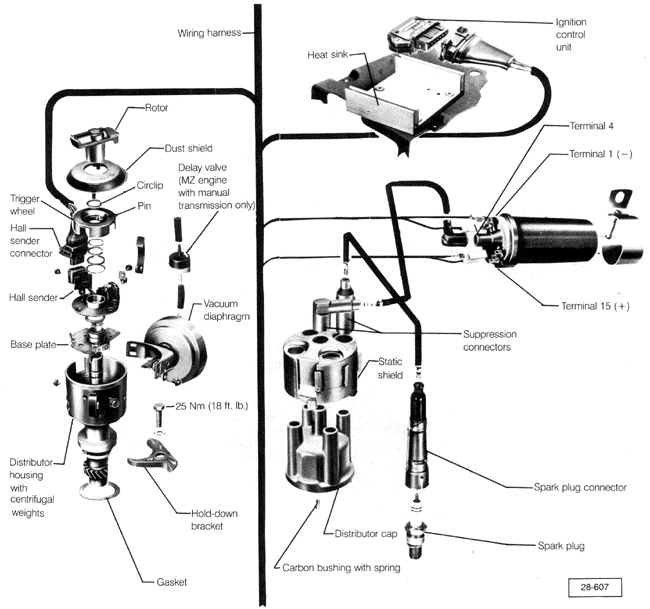
The components of the TCI-h ignition system with knock control used on engines with CIS-E fuel injection are illustrated in Fig. 4-2. The similar Digifant system includes the Digifant control unit which replaces the knock sensor control unit. Both systems are similar to the basic TCI-h system, except that all timing advance control is done electronically. The distributor has no timing advance capability. Instead, the signal from the Hall sender to the ignition control unit is manipulated electronically to adjust timing advance in response to engine load, engine speed, throttle position, knock sensor signals, and on Digifant engines, coolant temperature. The timing advance function is controlled by the knock sensor control unit or, on Digifant engines, by the Digifant control unit. These control units also have an rpm-limiting function. The components of the TCI-h ignition system with knock control used on engines with CIS-E Motronic fuel injection are illustrated in Fig. 4-3. Operation of ignition timing advance and knock control is the same as on Digifant systems, where all functions are controlled by the single Motronic control unit. Specifications for the transistorized coil ignition systems with and without knock control are given in Table d, Table e, Table f, and Table g.
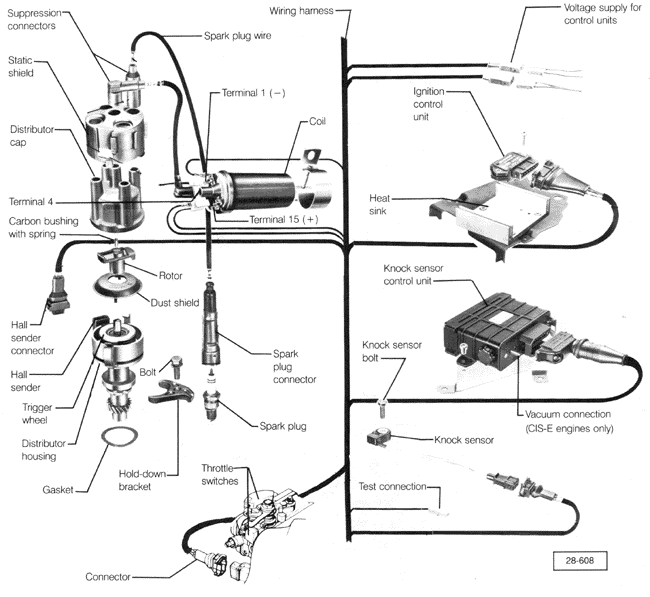
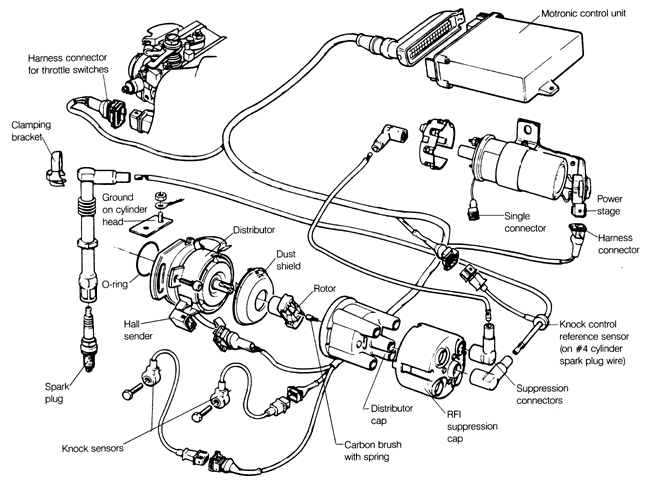
Table d. Basic TCI-h Ignition System Specifications (engine codes GX and MZ)
Table e. Ignition System Specifications TCI-h with Knock Control (engine codes HT, RD, PL)
Table f. Ignition System Specifications TCI-h with Knock Control (Digifant) (engine codes RV and PF)
Table g. Ignition System Specifications TCI-h with Knock Control (CIS-E Motronic) (engine code 9A)
|
